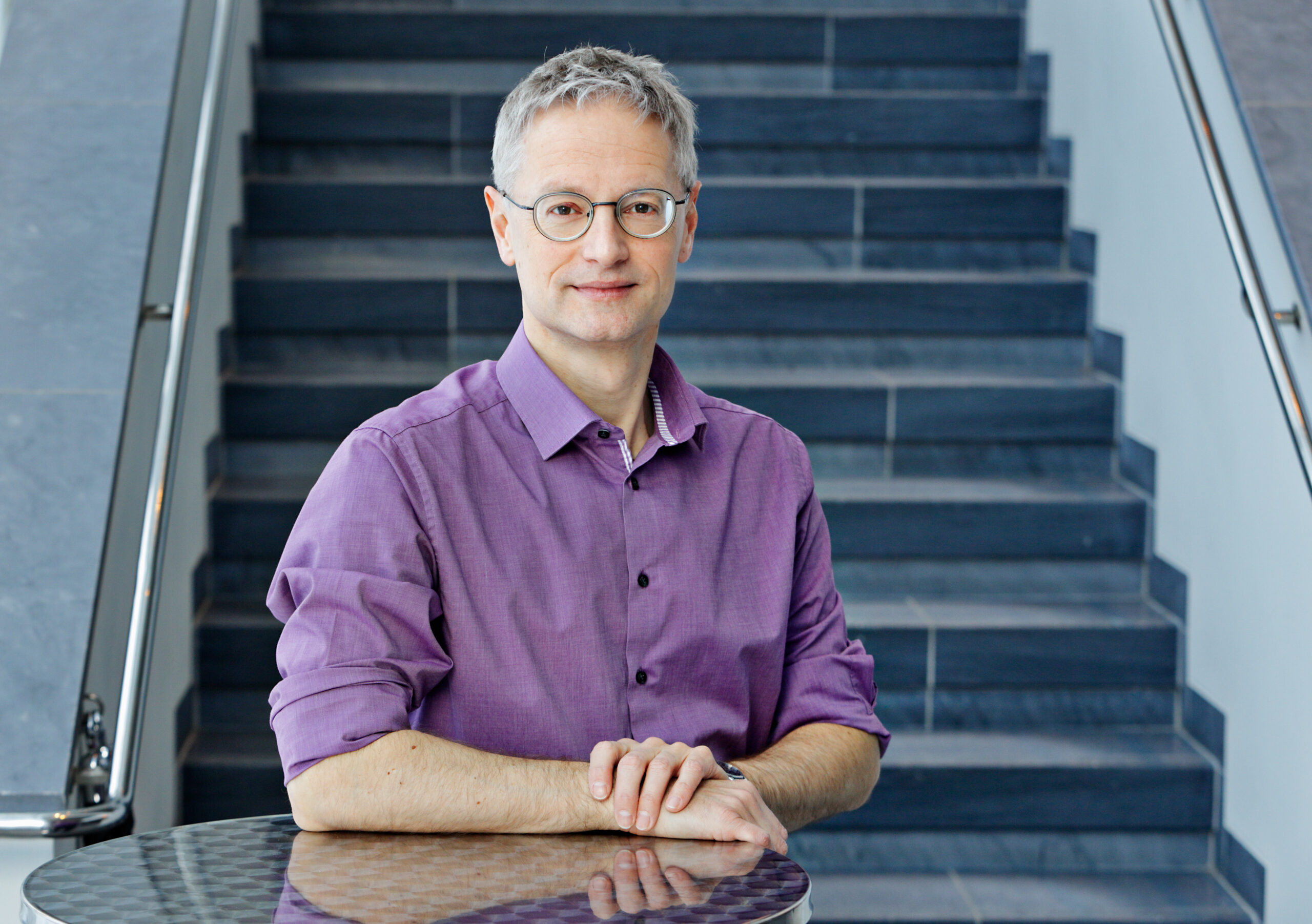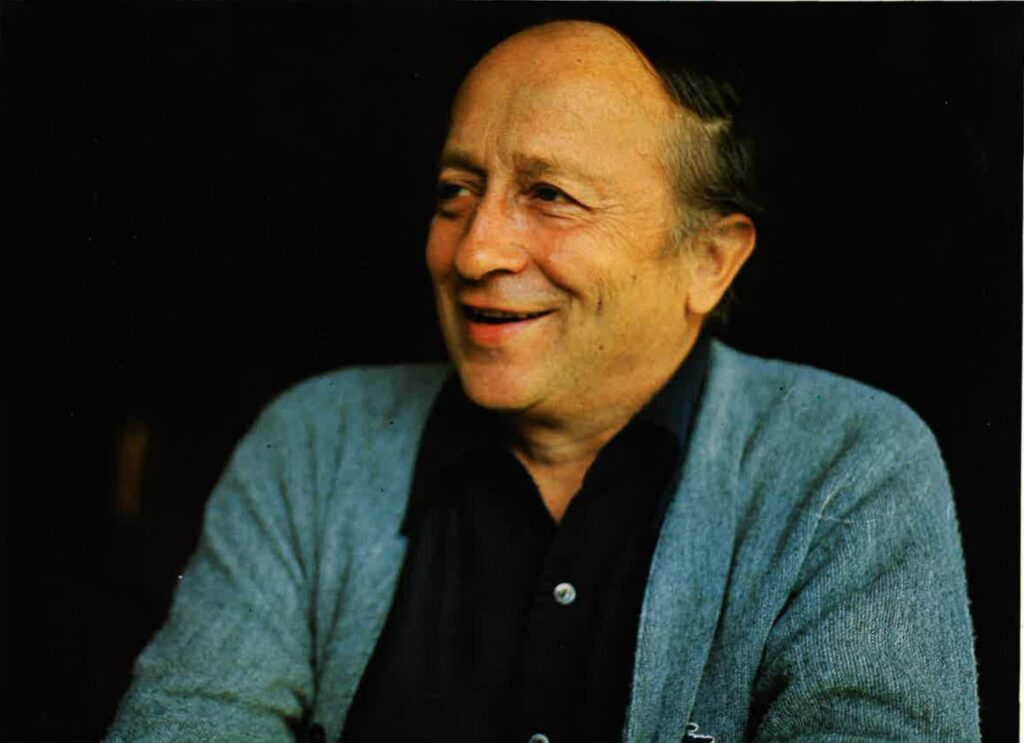

Veikko Tyrväinen 100 years
Veikko Tyrväinen (16.5.1922–11.6.1986) was a soloist at the Finnish National Opera for over a quarter of a century, from 1946 to 1972. He performed a total of 1077 times in 85 different tenor roles at Helsinki’s old Opera House on Bulevardi. Tyrväinen would have celebrated his 100th birthday on 16 May, 2022. To find out more about the career of this charismatic opera artist, continue reading.
”He didn’t shy away from pathos, and he excelled at displaying it, as his pathos was genuine. What’s more, he had the courage to be sensitive, and with that sensitivity he’d weave invisible yet resilient threads to connect with his audience. Finally, with his exuberant comedy, he enabled his listeners and spectators to share moments of unadulterated happiness.
The often overused and misused word charisma is ideal for describing Veikko Tyrväinen. He, if anyone, had true charisma, which has originally meant favour or grace. In a performing artist, charisma refers to an inexplicable source of brilliance, which relays the experience from the stage to the audience.”
This is how professor Matti Lehtinen, a fellow opera singer of Veikko Tyrväinen’s generation, described his colleague at the funeral at the Old Church of Helsinki on 19 June 1986. Other colleagues, too, have reminisced on multiple occasions about the immense energy and contagious emotion Tyrväinen brought to the opera stage. During a career that spanned several decades, he built a uniquely strong connection with his audience, as well as developed an exceptional artistic sensibility and imagination.
”The life of an artist is like the life of any human being. It’s only that certain relationships are governed by different laws. You must live so many different lives, to die so many times, to even kill a nightingale although it hurts, to give up on your love onstage. What is reality, and what is a dream, then? Every dream shapes the next time you’re awake,” Tyrväinen said in an interview about the relationship between opera arts and everyday life.
Tyrväinen’s tenor vocals had a beautiful, lyrical tone. He was a true natural tenor, who sang the high C with ease from a young age. His powerful, baritonal middle and low register together with the dazzling clarity of his high notes reminded the Finnish professor of musicology Erik Tawaststjerna of the great Caruso, as did his mannerism-free, unsentimental style and suggestive interpretation. Baritone legend Jorma Hynninen said he felt “nostalgia for the golden age of tenor singing” when listening to Tyrväinen. He also mentioned Tyrväinen’s ability to give himself over to his characters, his Bel Canto skills, and his exemplary articulation of librettos. As the world-renowned bass Martti Talvela put it, “What has been said of Benjamino Gigli also applies to Veikko Tyrväinen: ‘His soul sang’.”
From a childhood dream to professional studies
In his memoir Ilon kyyneleet (“Tears of joy”, 1975) Veikko Tyrväinen vividly describes his childhood spent in Jäppilä in the pristine Lakeland of South Savonia. The only son of a family of seven children, he gets up to mischief, wins several sports competitions, and daydreams in the beautiful Finnish countryside. His enthusiasm for running and skiing helped develop his lungs and breathing, honing his future instrument. It also taught him to rely on his physical stamina onstage.
Tyrväinen’s childhood home was full of singing, but interaction with the family’s closest friends was less exuberant. The cherished and intelligent friends of the Tyrväinen siblings were deaf mutes, which added a miraculous sense of solemnity to the many Christmases the families spent together. Could this have helped the little boy to develop his tacit radiance, which set him apart from his peers onstage? As he sang a song about the hardships of motherhood at his school’s Mother’s Day fete, there was no dry eye in the audience. Though he was only 8 or 9, he already knew it: one day he’d be an opera singer.
The Winter War put the young man’s fast-paced life on hold. As the local conscripts gathered at the Jäppilä community hall on their way to war, the 17-year-old Veikko sang “A Mighty Fortress Is Our God” to an audience of a thousand men. Despite his young age, he took on the role of cantor-organist at the local church. During the interim peace, his studies at the Mikkeli Youth Institute took him ever closer to his dreams.
It was the extreme circumstances of the Continuation War that led Veikko Tyrväinen to take the first concrete steps on his path to professional singing studies and the opera stage. His talent for singing was noticed, as he encouraged the wounded, the officers, and his fellow soldiers with his songs. When the conflict temporarily stabilised, Tyrväinen was given the chance to enrol in officer training, but he asked if he could take weekly singing lessons at the Vyborg Music School instead. Permission was granted. He was taught by the experienced singer Antero Suonio, and after his death, the internationally educated proponent of the Italian singing tradition, Olavi Nyberg.
After the war, Vyborg’s renowned music school moved to Lahti, and so did the singing student. He earned money for his education as a singing actor at Lahti Theatre. Vyborg’s life-affirming and cosmopolitan music culture, which had made a permanent mark on Tyrväinen, continued to thrive in the middle-sized town outside the Helsinki Metropolitan Area.
Opera calling
In spring 1970 Tyrväinen, the leading tenor of the Finnish National Opera, was preparing for the 25th anniversary of his artistic career. The start of that career had been made on the stage of Lahti Theatre.
In his two years in Lahti, from 1944 to 1946, Veikko Tyrväinen gained valuable experience in spoken drama. The reviews were encouraging, and the support and warmth of the audience, which included many former residents of Vyborg, also heartened him. His stellar performances in operetta roles played a decisive role in shaping his future. Theatre director Teuvo Puro offered him an acting tenure at the Finnish National Theatre, but the future opera singer turned down the opportunity. In 1946, Oiva Soini, the director of the opera who had heard Tyrväinen in Lahti, gave the 24-year-old a soloist a tenure at the Finnish Opera, today’s Finnish National Opera, without an audition.
Soon the newly employed opera singer would be seen walking to his workplace, the temple to the arts, along the beautiful Helsinki street of Bulevardi. He debuted as The Journalist in Sigmund Romberg’s operetta The Desert Song. Initially, Tyrväinen was known mainly as an operetta and buffo tenor. According to soprano Anna Mutanen, his acting skills were so widely admired at the opera that “his voice wasn’t really a major factor in comparison.”
The more senior artists at the Opera House gave Veikko Tyrväinen a heartfelt welcome. The only source of confusion was Tyrväinen’s tendency to ignore the institution’s social norms and fraternise with its dancers. “Are you on first name terms?”, a fellow singer might gasp in disapproval. Tyrväinen always cultivated friendships with the Finnish Opera’s dancers.
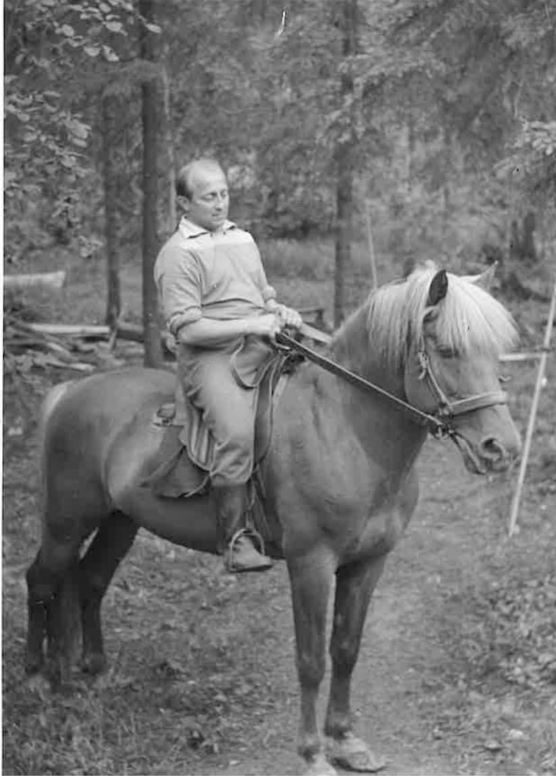
Unforgettable interpretations
Tyrväinen’s singing teachers from outside Finland included Manlio Marcantoni in Helsinki and Rome (1947 and 1952), Luigi Ricci in Rome (1952), Tino Pattiera in Vienna (1953), Adelaida von Skilondz in Stockholm (1954), Martin Öhman also in Stockholm (1955) and Clemens Glettenberg in Helsinki, Munich and Salzburg in the 1960s.
Tyrväinen’s teachers and more senior colleagues probably suggested a wealth of roles to him that would suit his lyrical voice. For one, he must have been considered an ideal interpreter of the emotional poet Lensky in Tchaikovsky’s Eugene Onegin. This role became particularly dear to him and his Finnish audience over the years. It was his tour de force, which gave the busy tenured singer of the Finnish National Opera a chance to give triumphant visiting performances abroad, too.
After lengthy preparation, Tyrväinen sang the role of Lensky on the stage of the Finnish National Opera for the first time in 1952 – in Finnish, as was customary at the time. Kerttu Metsälä-Ignatius who accompanied his lyrical Lensky as Olga in 1953, was especially taken by his fiery passion, his dramatic and heroic attitude, and his effortless lightness of tone. The singer was asked to practise the role in German for an audition at the Vienna State Opera, but he didn’t.
When the famous baritone of Moscow’s Bolshoi Theatre Pavel Lisitsian came to Helsinki in 1954 to sing the role of Onegin, he found his perfect Lensky in Tyrväinen at the Finnish National Opera. “I think you are the best Lensky in the entire world today,” he said. The next time they met was on the stage of the Bolshoi Theatre.
In the Soviet Union, Tyrväinen had the chance to showcase his Lensky in Leningrad (today’s St. Petersburg) and Minsk, too. Opera lovers in the composer’s home country were extremely taken by his interpretation, so much so that as the curtains closed after the duel scene, the audience in Leningrad shouted ”Sobinov, Sobinov!” Tyrväinen was being compared to the iconic Russian stage artist and vocal poet Leonid Sobinov.
As early as in his first year as an opera singer, Tyrväinen was offered the crucial role of the Duke of Mantua in Rigoletto. ”Let’s show those other tenors!” opera director Soini urged him. This put Tyrväinen off and he refused: the young tenor had patience along with ambition. He didn’t sing the Duke’s role until 1969.
During the 1950s Tyrväinen still accepted various great Italian opera roles. His interpretation of a fellow artist, the painter Cavaradossi in Puccini’s Tosca, gave fond memories to Finnish audiences over three decades. Alongside all the glory and elegance, he sang the role with soft, Tuscan emotion, Puccini’s essential trademark. The objects of Tyrväinen’s Cavaradossi’s passion were Toscas interpreted by Finnish sopranos Anita Välkki, Liisa Linko and his close colleague Eini Liukko-Vaara, and international stars such as Phyllis Curtin and Tamara Milashkina. The Finnish Cavaradossi inspired them to create unforgettable opera art together.
The pioneer of Finnish opera, Väinö Sola, was likely seen as the epitome of a great tenor by his younger colleagues, with his iconic interpretation of Canio in Leoncavallo’s Pagliacci. This was most certainly the case with Tyrväinen, and Sola confirmed their mutual respect in his senior years. Tyrväinen sang the role of Beppo in Pagliacci in 1948, and as soon as in 1959 he was cast as Canio, the aging, jealous actor. It was in the version directed by Lauri-Juhani Ruuskanen in 1969, that Tyrväinen achieved the magnificent veristic interpretation of Canio for which he is renowned. The expansiveness and reach of his lyrical voice had grown over the course of the past decade. In 1972 this artistic testament of his was recorded in a TV film directed by his friend Mikko Niskanen.
Another one of Veikko Tyrväinen’s most admired and interesting interpretations was his role as Tom Rakewell in Stravinsky’s 20th century classic The Rake’s Progress in 1965. “It was as if Tom Rakewell wilted and wilted until he finally lost his life. At the same time, the virtuoso vocals also turned into a kind of phantom song in the epilogue,” reported critic Jouko Kunnas in awe. The performer himself found the role of the poet Hoffmann in Offenbach’s The Tales of Hoffmann especially rewarding, as he felt a certain connection to the character’s disconnected soul. ”Putting every inch of one’s soul into the interpretation, with such glorious, all-embracing tenor brilliance, is only possible for a natural talent who has reached his mature middle age as an artist,” critic Seppo Heikinheimo wrote.
The older generation of opera visitors will still remember the high standard of soloists of the Finnish National Opera in the 1960s and their inspired and mutually inspiring ensemble practices. These were manifested in the exhilarating production of The Barber of Seville, in which Tyrväinen was seen as Count Almaviva. He got to showcase his famous versatility on stage, along with the dextrous coloratura skills demanded by the role. Tyrväinen himself said his throat was made for the technique, which also came in handy in the various Mozart productions of the Finnish National Opera.
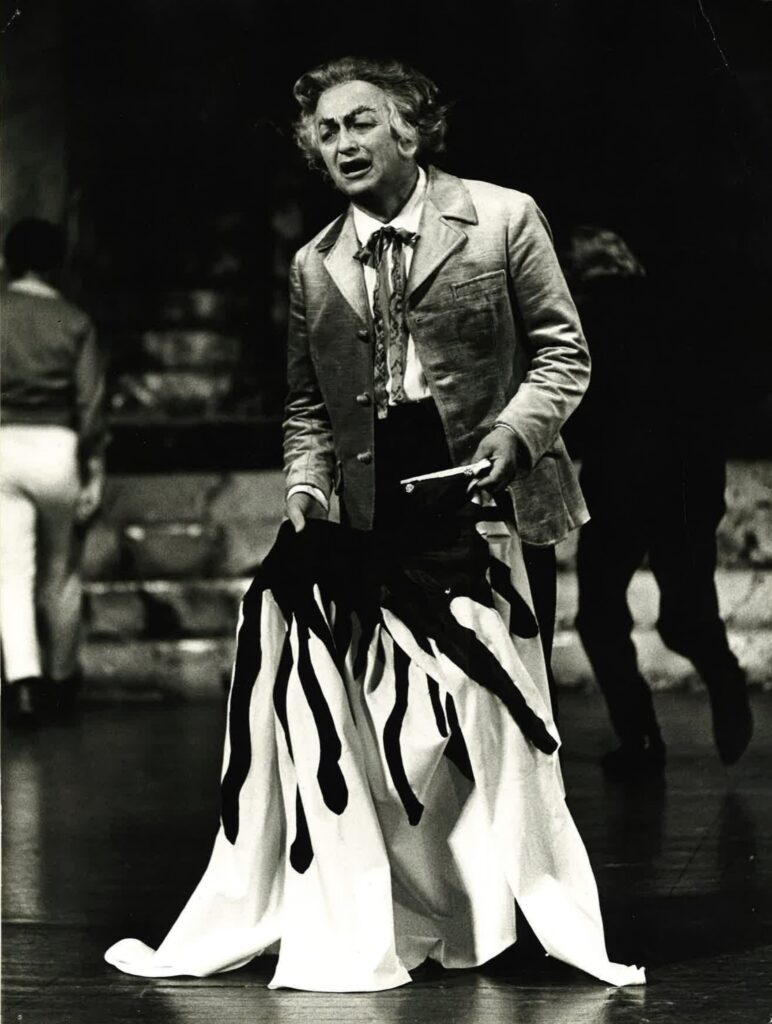
The major minor roles
Veikko Tyrväinen said that he always approached his roles from the vantage point of the character. Minor roles could be as artistically challenging and rewarding as the major ones. When talking about supporting roles with great dramatic significance in an opera production, he always referred to the “major minor roles.”
Such roles allowed the artist to make the most of his sharp observational skills, which his agrarian background had perhaps stripped of excess sentimentality. The character of Salttu from The Ostrobothnians by the Finnish composer Leevi Madetoja eventually became one of his favourite opera roles, which he first rehearsed with the legendary theatre director Vilho Ilmari in 1950. His interpretation was also a success on the Finnish National Opera’s Nordic tours. Tyrväinen adored his comic role as the self-sufficient Ostrobothnian man, his first “depiction of a drunk.”
He also loved putting himself in the shoes of the Tattered Peasant in Shostakovich’s Katerina Izmailova. Tyrväinen would call the muzhik who needed alcohol for his ideas to run wild “a hero of the imagination.” The Finnish National Opera has kept a recording of Tyrväinen’s unrestrained, grotesquely comical rendition of the Tattered Peasant’s song, which he performed while swaying on a ladder. The explosive applause that followed shows the audience’s exhilarated response to the macabre interpretation.
Ralf Långbacka’s version of Berg’s Wozzeck at the Finnish National Opera in 1967 was, according to Tyrväinen, a show of brilliant theatre and universal social commentary. Giving rise to the unashamedly self-obsessed character of the captain was a treasured experience for the tenor, and the director, too, remembered the collaboration fondly.
Yet another rewarding task in Tyrväinen’s career was his journey to the soul of The Holy Fool in Mussorgsky’s Boris Godunov in 1969. The man who everyone else considered crazy looked down upon the mighty Czar. Martti Talvela considered Tyrväinen’s Holy Fool as the personification of truth, which alone makes Boris’s crumbling plausible.
In the centenary of Veikko Tyrväinen’s birth on 16 May, 1922, his memory at the Finnish National Opera shows no signs of waning.
Text HELENA TYRVÄINEN
Photos from the Tyrväinen family album
Listen to Lensky’s aria performed by Veikko Tyrväinen
Recommended for you

Peek behind the scenes: professionals present their tools

OopperaLooks – Dressing up for the opera and ballet
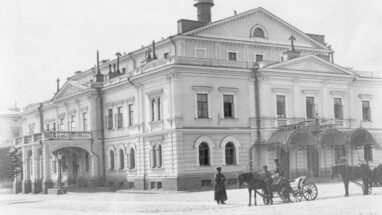
The Finnish National Opera and Ballet through the decades
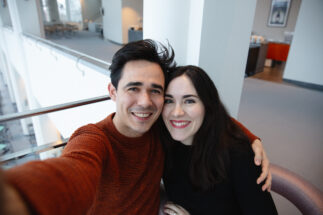
Love in the orchestra pit

Seamstress Outi Riikonen

La Karita, totally

Ballet pianist Marja-Kaisa Mäkinen
